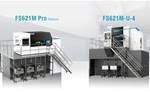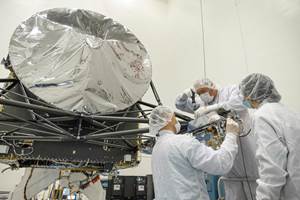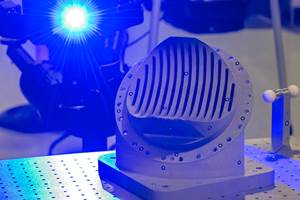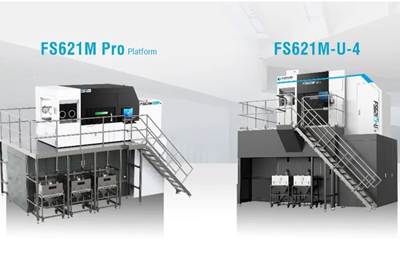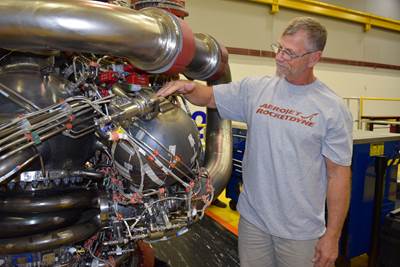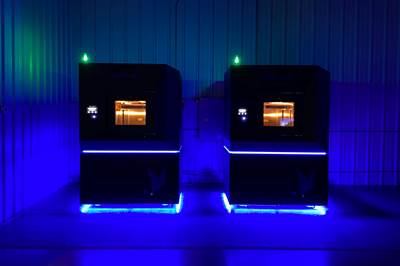Reusable LOX/Kerosene Engine Completes First Successful Full-System Test Flight
Galactic Energy Space Technology announced the first successful full-system test flight of its Welkin 50-ton reusable LOX/kerosene engine. To date, this is the highest thrust LOX/kerosene engine in the Chinese commercial aerospace playing field which has officially entered the engineering and manufacturing phase.
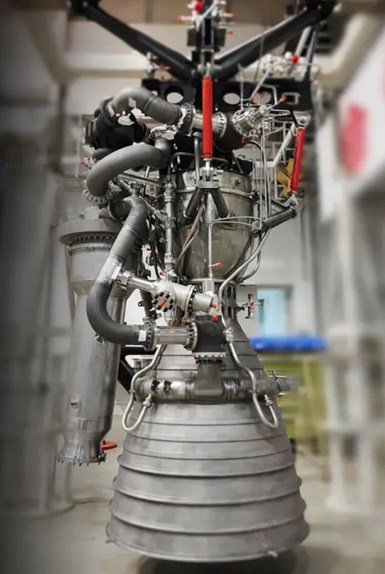
The Welkin Reusable LOX/kerosene engine features more than 30 metal 3D printed components and is designed to be reused up to 50 times. The engine uses a variable area pintle-type injector and a combination of film and regenerative cooling. Photo Credit: Galactic Energy. Photo Credit: Galactic Energy
Galactic Energy Space Technology Co. Ltd. (Galactic Energy), a commercial aerospace company, has completed the first successful full-system test flight of its Welkin 50-ton reusable liquid oxygen (LOX)/kerosene engine. Several of the key components in the rocket engine including the turbo pump and the LOX/kerosene main valve housing are 3D printed by aerospace manufacturing service provider Falcontech using a metal laser powder bed fusion solution from Farsoon Technologies.
The reusable Welkin 50-ton LOX/kerosene engine is said to be the first large-thrust liquid rocket Chinese engine which adopts the pintle injection technology. Featuring variable thrust capability, the Welkin engine is a suitable option for vertical recycling of 200 to 300-ton liquid rockets. According to Galactic Energy, this is the highest-thrust liquid oxygen/kerosene engine in the Chinese commercial aerospace playing field which has officially entered the engineering and manufacturing phase.
The aim of Galactic Energy’s full system test was to verify the engine operation, structural design and the coordination of each assembly. During the test flight, the engine’s ignition, starting and the transition were tested for performance with gathered data showing that each component worked as the company expected. The combustion process was shown to be stable, and the major performance parameters observed were consistent with the calculated data values. Galactic Energy says the test achieved complete success with the engine remaining intact, and in reusable condition, after the test.

An array of Farsoon’s FS421M metal systems are installed at Falcontech Super AM Factory. Photo Credit: Falcontech
Customized Metal 3D Printing Processes for Rocket Engine Application
In July 2019, Galactic Energy partnered with Falcontech on this manufacturing project with more than 30 parts of various sizes. All parts were produced and accepted by Galactic Energy in four months. Based on Farsoon's large-frame metal 3D printing solution, Falcontech's engineering team developed multiple sets of customized production processes targeting the rocket engine production workflow. These processes included laser beam welding, five-axis machining, dynamic balance test, anodizing treatment, pneumatic and hydraulic tests, and more.


A series of functional tests are conducted on 3D printed components at Galactic Energy. Photo Credit: Falcontech
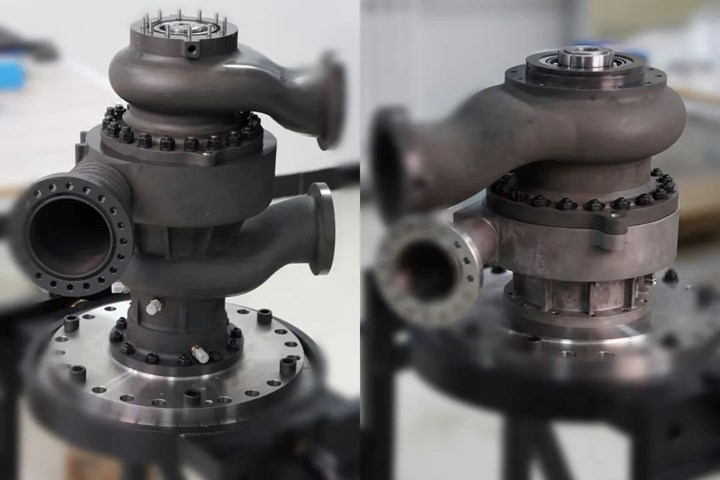
The 3D printed turbo pump assembly for the hydraulic test. Photo Credit: Falcontech
80% Shorter Production Cycle
One particular component of the Welkin engine illustrates how 3D printing assisted the design process and improved manufacturing as well. The thrust chamber of a high-thrust liquid rocket engine usually adopts active regenerative cooling for the combustion chamber thermal protection. With conventional manufacturing technologies, the manufacturing process of thrust chamber components is complicated and can take several months. A slight production variation in one single component could lead to the functional test failure of the whole thrust chamber.
During the design phase of the turbo pump, the Galactic Energy engineering team compared the efficiency of two models: one designed according to a traditional machining process and the other with an updated profile for 3D printing solution. The team found the updated design displayed improved production efficiency by 5%. In design and manufacturing solutions for turbine disks, traditional machining can take 20 to 25 days. However, 3D printing’s manufacturing cycle can take only three to four days — 80% shorter than traditional machining with an additional reduction in production cost.
In the future development of the Welkin reusable LOX/kerosene engine for the company’s Edge orbit control systems, Galactic Energy sees many opportunities to use 3D printing targeting lightweight design, high-strength components and improved part reliability.
Related Content
Cryogenic Tanks for Space Refueling: The Cool Parts Show All Access
NASA's Paul Gradl describes an important application of AM beyond the spacecraft itself: refueling the spacecraft. Directed energy deposition offers the most practical way to produce aluminum tanks to keep fuel supercool.
Read MoreZenith Tecnica Manufactures 3D Printed Hardware for NASA Psyche Mission
The node components designed by Maxar Space Systems were well suited to the advantages of EBM AM due to their complex geometries.
Read More8 Cool Parts From Formnext 2023: The Cool Parts Show #65
New additive manufacturing technologies on display at Formnext were in many cases producing notable end-use components. Here are some of the coolest parts we found at this year’s show.
Read MoreAdditive Manufacturing in Space: Failing Upward
Not all 3D printed parts destined for space need to adhere to the standards of human space flight. Yet all parts made for space programs require some type of qualification and certification. NASA and The Barnes Global Advisors explore Q&C for these parts.
Read MoreRead Next
Farsoon’s LPBF Systems for Large-Scale Metal Additive Manufacturing
The FS621M Pro-4, FS621M Pro-6 and FS621M-U-4 systems are said to offer huge potential in aerospace applications by lowering operational cost and enabling true industrial-scale series manufacturing.
Read MoreSpace Launch System Accumulator is a Giant Leap for 3D Printing
A collaboration between Aerojet Rocketdyne and NASA is resulting in critical parts being 3D printed for new versions of the workhorse RS-25 engine.
Read MoreAerospace Applications for 3D Printed Composites: AM Radio #15A
3D printed composites are taking the place of traditional metal parts in a specific niche of the aerospace industry.
Read More

